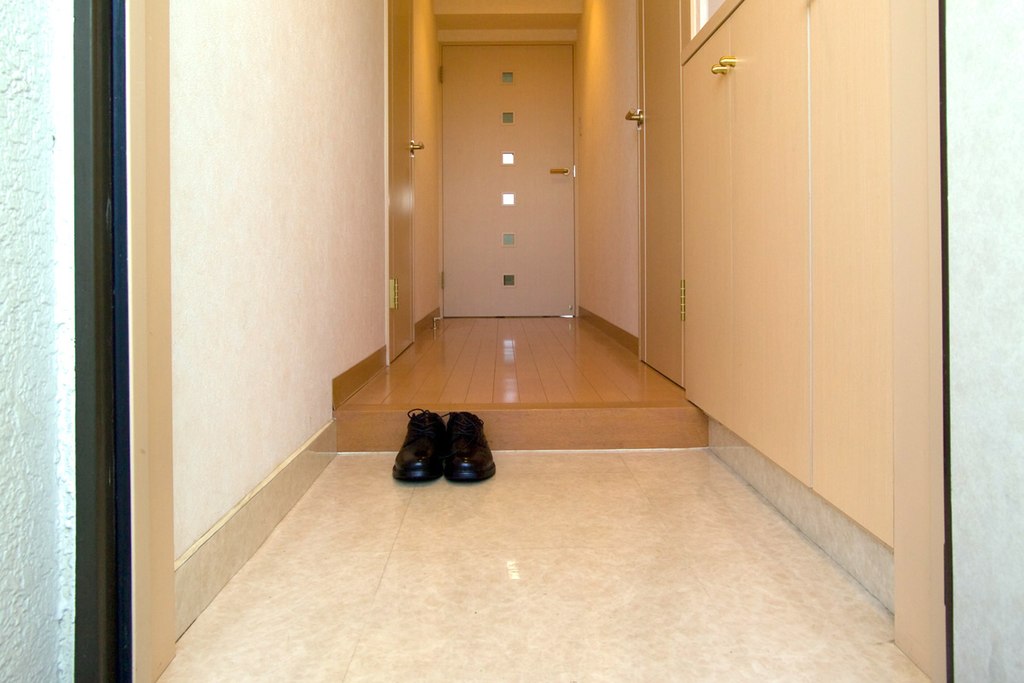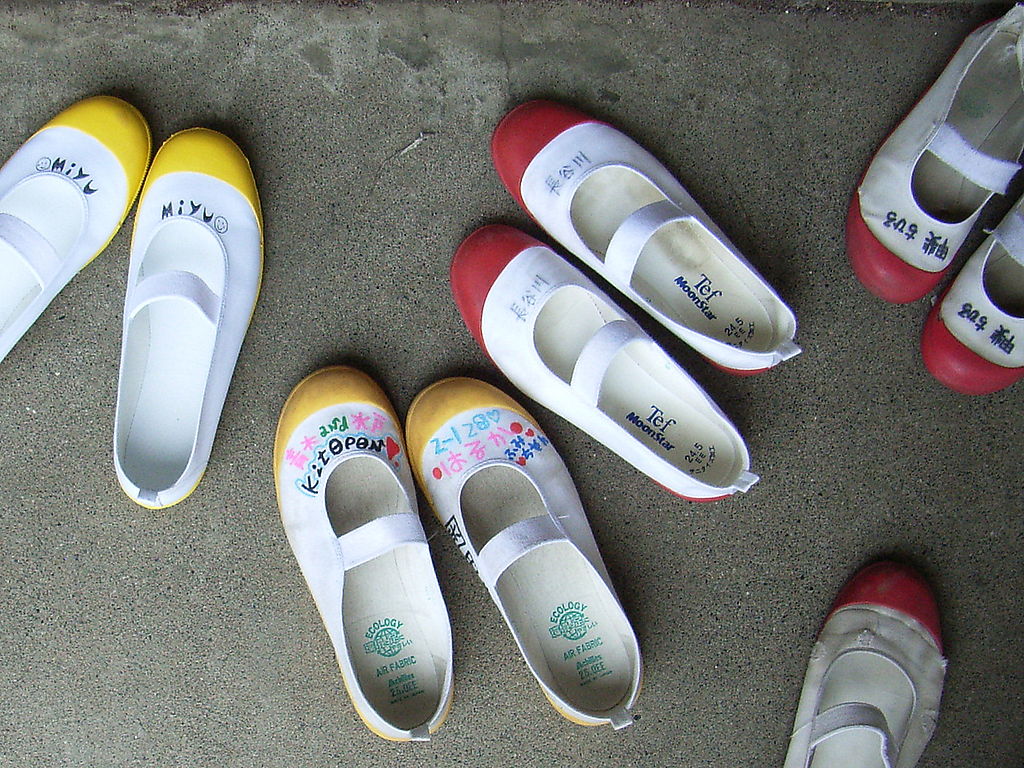It is widely understood that the Japanese have unique customs. Perhaps this stemmed from their history of being secluded, thus the country had hundreds of years to create and hone their own traditions and cultures with borrowing only a very minimal amount of influence from the outside world. Also, keep in mind that the Japanese are also known for being a very clean society.
Setting aside their quirky fashion styles, intense work philosophies, cuddle cafes, and capsule hotels aside, Japan has had the custom of removing shoes before entering one’s home for over a thousand years. This relates to their inclination to practicing good hygiene and cleanliness.
The practice of removing one’s shoes before entering is still followed, and strictly so, in many households. Walking straight into their house with shoes worn coming from the outside can be a sign of disrespect and lack of thoughtfulness. It can also immediately ruin pristine tatami mats. However, you don’t have to walk around barefoot or in plain socks, – one way around keeping the floors of one’s home clean is by designating shoes specifically used indoors. One popularly used indoor shoe is called the Uwabaki.
The Roots of Removing One’s Shoes Before Entering
Japan segregates and categorizes its history based on periods, and the period this custom supposedly started is from the Heian period, which occurred between the year 794 Ad until 1185 AD - long before the Uwabaki existed. The main point of why people remove their shoes was, and still is to avoid contaminating the floor with dirt picked up by their footwear from the outside, may that be mud, grass, or undesirable residue under one’s shoe.
Don’t Walk Around the House in Shoes, Please
At the same time, what covered (and still cover) the floors of many of the rooms in Japanese houses were straw mats, called “tatami” in Japanese. These mats are where people would directly sit and sleep on (they would spread out their traditional bedding called “futon” here), so it was important to keep it sacred and clean by avoiding contact with dirt from the outside. Thus, when you enter, there’s a specific entrance designated as a place for you to leave your shoes. This area is called a “genkan”.
It also didn’t help that the shoes at that time were prone to gathering mud, as popular traditional shoes were worn at the time were Japanese clogs, called “geta”, or Japanese straw sandals, called “zoori”. The geta had two protruding sections on the soles of the shoes, which could accumulate a large amount of mud on a humid, rainy day.

More About the Genkan
Most Japanese homes (and even institutions and buildings) begin with a genkan – whether it’s a small apartment or a large establishment. It’s that noticeably recessed part by about 5 to 10 cm that comes right after the front door when you enter, within the building. It is purposefully sunken so that any dirt brought in or on the shoe does not contaminate the rest of the floor and can be easily swept out.
However, a genkan does not necessarily have to be sunken, especially in the case of smaller apartments. Here, they are just a space by the door dedicated to removing and storing shoes. For the most part, the genkan is also usually made of a separate flooring material than the rest of the house, just so that it is clearly established as the genkan.
Once you remove your shoes in the genkan, you must avoid stepping on the floor of the genkan with your bare feet, as you will end up bringing the dirt in the genkan into the house. Thus, you must directly step on your indoor shoe/slippers, which are called your “uwabaki”, before proceeding inside.

What Are Uwabaki?
Written in Japanese as “上履き”, uwabaki are slip-on shoes that are designated for indoor wear. Another term for uwabaki is also “barei shuzu”. Schools in Japan require you to wear an uwabaki before entering, as they practice the mandate of having to remove one’s shoes before entering.
In their personal homes, most people prefer to wear open heel slippers or rubber sandals, (in Japanese, they refer to this simply as “suripa”) as these are affordable and comfortable. However, it would be too informal to don such footwear in a school environment. Thus, the uwabaki was conveniently assigned for schoolchildren to wear in school, as it is a closed kind of slipper, letting children walk free of care, or play without it slipping out.
Because they are made specifically for indoor wear, uwabaki are made of a light material – usually canvas – with a flexible rubber sole. They are mainly white in color but can come in different designs and color accents around the front ends of the shoes. They have a small gap between the shoe’s throat and toe cap, and a thick elastic band to secure the foot. Children usually wear socks under the uwabaki.
The History of Uwabaki
There is no distinct and clear information on the history of the uwabaki, and how it came to be as such. However, it draws distinct similarities to that of the plimsoll, which is of British origin. This would be no surprise, as the Japanese borrowed the idea and term of “bloomers” to create their own kind of clothing, called “Buruma”.
See, ever since the Meiji period, Japan has openly borrowed western products and habits, often fusing them with their own – thus, using a western-inspired shoe to uphold a hygienic cultural mandate.
Plimsoll Shoes Versus Uwabaki
The difference between the plimsoll and the uwabaki is that the plimsoll does not usually have a gap, while the uwabaki does. The similarities are striking; both are made of stretchable canvas with a rubber sole, and both have an elastic band. The Plimsoll was also used in the UK as part of the uniform of physical education class, and earned the nickname of “sannies”, as plimsolls were initially developed to be sand shoes, or shoes to be worn in the beach.
Though there is no certified date of when the trend of uwabaki began in Japan, it could be ascertained to have started as early as the Meiji period itself. Speculations say that during the late 1800’s, journals portrayed lampoons of how the Japanese dressed up in school; thus, humiliating the country’s leaders. They would encourage globalization and modernization, inviting European and American scholars to come over and teach how their school systems worked.
Modernization and Industrialization
So, sports and other athletics classes finally made their way to Japan, starting with the Naval academy. The globalized education system took off most especially when a man named Frederick Strange came to teach at the Academy of Ichiko (which would soon become Tokyo University). As early as then, many Japanese students were already wearing uwabaki, inspired by the English footwear plimsoll.
As the 19th century was also known for its booming industrialization period, cotton and rubber were abundant and easily allocated, making the shoes a breeze to manufacture, and affordable to purchase for everyone to wear. Today, uwabaki is not as often used for physical education as it was in the olden days. Rubber shoes or gym sports shoes have since replaced the uwabaki.
Aside from being used in school settings, uwabaki are also currently worn by nurses working in hospitals.

Uwabaki and Other Shoes in Pop Culture
Because it is so popularly used in school settings of all the way up to high school, the uwabaki is understood to be a part of what a student wears and is thus seen in many shows and anime when a student – particularly a younger boy or a girl – is portrayed. So, when someone wants to cosplay as a student from an anime, an uwabaki is usually part of the look.
Uwabaki Cook the Anime
Unbelievably, there is an anime about uwabaki. It tells the story of an uwabaki shoe for the left foot named “Cook”, colored mainly white, with red accents on its head, protruding arms, and protruding legs. Cook lost his brother because he was tossed in the trash. Cook would also later be thrown away, where he begins his journey to find his brother. Along with his adventure, he meets other “live” items, such as glasses, chairs, etcetera, that encourage him. Each item helps him boost his self-confidence and continue his quest.
The anime got a rating of 4.5 out of 10, given by 8 users. It had 13 episodes, and aired from January 5, 2015, until March 20, 2015. Each episode was only 3 minutes long and was rated PG for children.
Where to Buy Uwabaki
It’s easy to find uwabaki in the shoe section of any large department store or grocery in Japan. They cost upwards of 800 yen there. You may also order them online on Japan’s exclusive Amazon website, or on the Rakuten global market. They usually go for about 1,890 yen online, which is around 18 U.S. dollars.

Available Colors of Uwabaki
Most uwabaki are colored plain white. Some say that the reason for keeping them white is to make sure that they are washed often, and can be monitored for personal cleanliness. Others have a stripe of color on them, usually around the toe cap. These colors vary from pink, dark blue, light blue, orange, yellow, green, and red. Sometimes, these colors are used to determine the grade of the wearer. The ones with color are also sometimes extra reinforced around the soles and toe cap area, in case the child bumps his or her foot on something solid.
The uwabaki does not escape trends, and there are rarer uwabaki that come out with cute cartoon characters for kids in kindergarten, such as hello kitty. Other uwabaki have full-blown designs etched all around the shoe, others have them solely on the shoe’s vamp. There are options that have the uwabaki completely in a different color, such as pink or blue, but these seem to be not as popular as their traditionally white counterparts.
There are also uwabaki that have been taken up a notch, especially women. They are made of leather and even denim, and go with a fancy leather strap as well, instead of a gartered band, and can be found on the website of “akujidou”. Truly, the best way to choose and wear uwabaki is however you wish, in any month or season – just make sure your feet are clean when you walk in the door.
